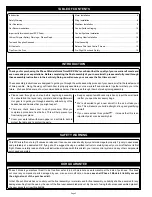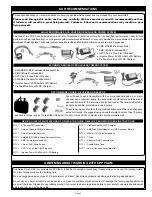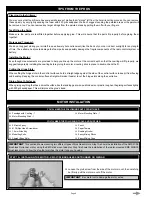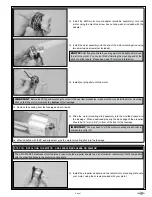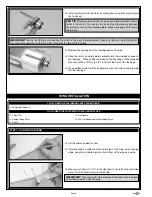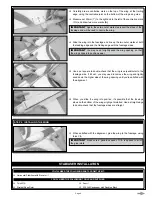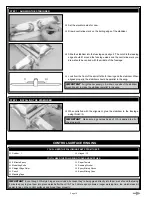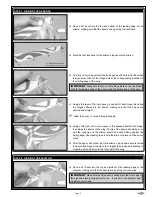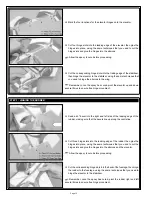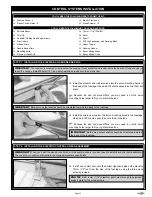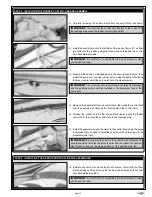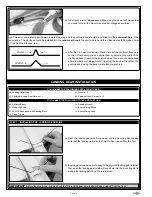
Page 4
WARNINGS AND SAFETY PRECAUTIONS FOR ALL BRANDS OF LITHIUM POLYMER BATTERIES
Please read and understand the warnings listed in this section. Make sure you read any and all warnings
included in the packaging with your battery, too. If used improperly, lithium polymer batteries can be very
dangerous, so please follow these warnings and suggestions at all times.
l
This product may explode or catch fire. Serious injury can result from misuse. Serious injury, loss of property, fire and death can
result from misuse of this product.
l
All instructions, warnings and cautions must be followed at all times. Failure to do so can lead to serious injury or fire.
l
Do NOT use this product before reading and understanding all directions and warnings.
l
Do NOT overcharge. Maximum voltage for each pack must be followed.
l
Do NOT over-discharge. NEVER discharge below minimum volts.
l
Do NOT discharge at a rate greater than the maximum continuous discharge.
l
Do NOT use or charge if the battery is hot.
l
ONLY use a charger made for Lithium Polymer batteries.
l
Do NOT charge at a rate higher than C. Example: if the battery’s rating is 340mAH, then the charger’s charge rate must be set at
340mAH or less.
l
Do NOT leave in direct sunlight or in a hot car or storage area.
l
Do NOT get wet or expose to moisture.
l
Do NOT short-circuit the battery.
l
ONLY discharge and charge the battery outdoors or in a firesafe container.
l
Do NOT charge with reverse polarity.
l
Do NOT leave the battery connected when not in use.
l
Do NOT operate or charge unattended.
l
Do NOT solder to the battery directly and do not get the battery hot in any way.
LitHiuM POLyMer Battery WarNiNGs - PLease read
CHARGING PRECAUTIONS FOR ALL BRANDS OF LITHIUM POLYMER BATTERIES
l
Do NOT use the product if you do not understand the warnings and proper use of the product.
l
Always let the battery cool and "rest" between uses and charging.
l
To avoid over-discharging, only use a speed controller that is made for Li-PO batteries.
l
We recommend the use of a firesafe container when charging or storing.
l
Do NOT charge inside your car or inside your house.
l
Inspect the battery before each use for swelling or other malformation. If the cells have ballooned, the battery MUST be discarded.
l
Set the charger to 1C (charge at 1/2C or less for the first 5 cycles).
l
Check polarity and then connect battery to charger.
l
In use, do not over-discharge or exceed maximum discharge.
l
When handling the battery, remember not to poke, bend or damage the cells. The cell outer casing is soft and can be damaged.
l
Remember, the cells must never exceed 7 degrees Celcius (60 degrees Fahrenheit) for any reason.


